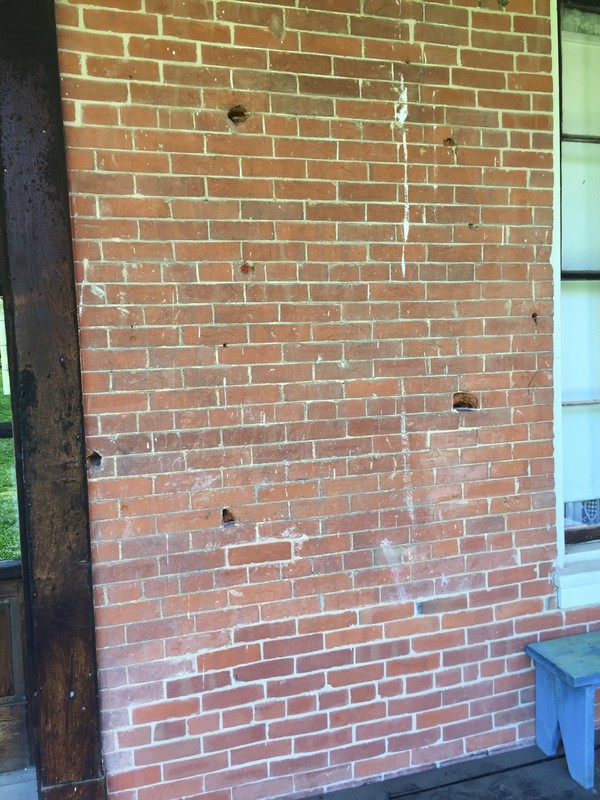Anderson House
Introduction
Text-to-speech Audio
The Oliver Anderson House not only holds a history with its vital part in the Battle of Lexington, but it also provides reference to what type of housing wealthy slave-holding Southerners resided in at the time. The house was built in 1853 by Oliver Anderson, a successful hemp manufacturer. In a local newspaper put out in September 1853 it was stated that, “It is said that this building will be the largest and best arranged dwelling house west of St. Louis. The location is romantic and beautiful. . ." The house is extravagant, containing 15-foot-high ceilings and cast-iron columnns on the front porch. At the time, this house was the best of the best, and it was all thanked to the success Oliver Anderson and his slaves. Unfortunately, in 1857, the nation faced a financial crisis and Oliver Anderson’s hemp business took a hit. Anderson was forced to auction off his personal property and his slaves, this included his mansion. The house was purchased by his sons, so the house stayed under the Anderson name until the Civil War.
Around July of 1861 the Anderson house was evacuated and converted into a hospital. Over the course of the Battle of Lexington, which took place September 18-20, 1861, the ownership of the Anderson house flipped multiple times. Southerners forced Union defenders out of the house, however in a bloody countercharge the Union soldiers retook control, only to fall once again to Southerners shortly after. In the struggles, the Union troops killed three Southern prisoners at the base of the Anderson house’s grand staircase in the main hall, and a bullet hole still remains in one of the staircase risers. The Battle of Lexington took a toll on the house and this can be seen from both the inside and outside. On the east side of the house evidence of rifle and cannon fire can be seen, and the damage even carries into some of the rooms inside. A lost cannon ball found its way into the attic of the house, crashing through the attic floor and into the second-floor hallway underneath, to this day the hole that the cannon ball caused remains a reminded of the house’s intense past.
Built in 1853 the house faces west overlooking the Missouri River from a bluff on the north edge of Lexington. Standing in the front yard it is not hard to imagine the peaceful evening the Anderson’s surely enjoyed while residing in the house. However, the visitors to the house only need to walk to the backyard to have the peace shattered by the American Civil War. The exterior walls on the eastside of the home still bears the scars of the violence that occurred there during September 18-20, 1861. The “Battle of the Hemp Bales” was an absolute victory for the Confederate Forces and shines a historic “spotlight” on Oliver Anderson’s home.
Anderson was born in Kentucky in 1794 and moved to Missouri in 1851. Upon arrival in Lexington Anderson went into business with his son-in-law and built a hemp manufacturing warehouse down the hill from where the house was constructed two years later. Anderson also owned a brick company and most likely produced the brick for the home. This is not surprising as many of the Greek revival style plantation homes along the Missouri River were built with brick produced from clay banks on the plantations themselves. It is likely that the brick production is overlooked because of the role hemp played in the battle.
The backyard has the foundation of the outdoor kitchen that many plantation homes had. The outdoor kitchens were used through the summer to keep the heat out of the house. Although, the house sits on a limestone foundation the brick foundation of the kitchen shows how the walls of the house are constructed and the bricks laced together for added strength. The walls of the house are three bricks wide creating exterior walls that are a minimum of one foot thick. A quick calculation using the dimensions provided in the sites pamphlet the main part of the Anderson house would require nearly 100,000 standard bricks to rebuild (a standard three bedroom ranch takes about 8000 bricks to veneer).
The vegetable garden is a few steps from the kitchen at the back of the yard and just beyond that is were Colonel Mulligan and the Union forces had retreated after General Price and the Missouri Guard pushed them out of Warrnesburg, MO. When Price arrived in Lexington the Confederates surround Mulligan and the Anderson house was between the lines of the opposing armys. This created the ideal situation that transformed the Anderson house from home to field hospital. During the three days of battle, the house changed hands several times on the first day.
Oliver Anderson was a strong southern sympathizer and returned to Kentucky at the end of the Civil War. Anderson died in 1873 at the Kentucky home of the son-in-law whom he had originally went into business with in Lexington, Missouri. Tilton Davis acquired the house and spent fifty years preserving the house. It is unclear what the dates of the Davis ownership are. However, from information gathered from the staff at the visitors center the home was vacant in 1958 when it was donated to the state park system. The hours are posted on the door and on their web site.
Images



Sources
"The Oliver Anderson House." Missouri State Parks. N.p., n.d. Web. 27 Apr. 2017.
